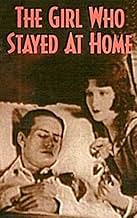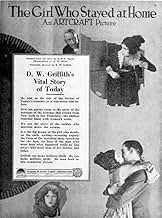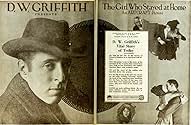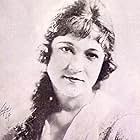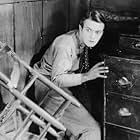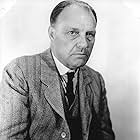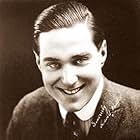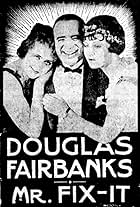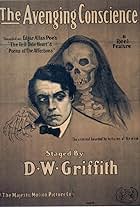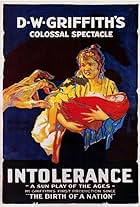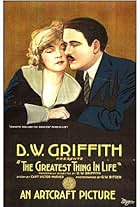Story of two brothers who go off to France to fight in World War I, the women who love them and an American expatriate living in France who rallies behind his former country.Story of two brothers who go off to France to fight in World War I, the women who love them and an American expatriate living in France who rallies behind his former country.Story of two brothers who go off to France to fight in World War I, the women who love them and an American expatriate living in France who rallies behind his former country.
Joseph Scott
- Joseph Scott
- (as The Hon. Joseph Scott - Head of the Draft Exemption Board)
E.H. Crowder
- E.H. Crowder
- (as Provost Marshal Gen. E.H. Crowder)
Newton Baker
- Newton Baker
- (as Secretary of War Newton Bakr)
Storyline
Did you know
- TriviaOne of the final films of Robert Harron, one of DW Griffith's favorite actors. Harron died of an accidental gunshot wound a few months after the release of The Girl Who Stayed at Home, at age 27.
- ConnectionsReferenced in The Great Director (1966)
Featured review
THE GIRL WHO STAYED AT HOME (Paramount/Artcraft, 1919), directed by D.W. Griffith, is only a movie title. It doesn't reflect upon a widowed housewife caring for her children but mostly about two brothers off to war, with the girls they love left behind. Following the current Great War trend of Griffith's earlier two hour production of HEARTS OF THE WORLD (1918) starring Lillian and Dorothy Gish, the great director attempts to do another, but on a lesser scale minus the Gish Sisters but honorable support of Griffith stock players. While the movie might have or should have been titled "The Men Who Went to War," in all essence, the "girl who stayed home" in the story is basically on a secondary character with a promise to remain loyal to her soldier of war.
Before the individual character introduction begins, an opening passage to what is to be presented ensues: "On a June day, gold with spring and blossoms in an old château in the pleasant valley of the Marne, Monsieur France sits dreaming. It is his boast that he is the only citizen of the confederate states of America who has never surrendered. At the end of the Civil War he escaped to his father's home in France rather than submit to the Yankees." The man in question is Monsieur France (Adolphe Lestina), a veteran of the Civil War who has purchased a run-down home of his forefathers where hangs on the wall his flag of the Confederacy. With the passing of a generation, he is again alone, with the exception of his granddaughter, Atoline (Carol Dempster), "A young blossom from the old stock." Coming for a visit is Atoline's New York chum (Frances Parkes) at the Paris School who visits while touring Europe with her family, consisting of Mr. and Mrs. Edward Grey (George Fawcett and Kate Bruce), and their elder son, Ralph (Richard Barthelmess). While Ralph shows love and compassion towards Atoline, she happens to have a favored suitor, Count de Brissac (Syn De Conde). James (Robert Harron), Ralph's younger brother, better known as "The Oily Peril" (translation: "Heartbreaker"), is both college boy and a weakling. He shows his cowardice by refusing to defend himself towards a drunken German while entertaining Atoile in the park during her visit in America. James loves Cutsie Beautiful (Clarine Seymour), a Broadway café entertainer with a reputation for the men. As war breaks out in Europe, Ralph enlists while his father keeps James behind in his shipping business "juggling time-cards." Although drafted, Grey's influence with the draft board fails to influence them in keeping him home, thus, becoming a soldier of war. While Cutsie Beautiful becomes the girl who stayed at home, avoiding a past suitor (Tully Marshall), will she remain faithful to James?
Of a handful of silent features directed by D.W. Griffith, THE GIRL WHO STAYED AT HOME, which fortunately survives intact, ranks one of his lesser known works. Credited as part of his "short stories" collection, this is definitely a small movie (69 minutes) compared to his earlier two hour plus epics of THE BIRTH OF A NATION (1915) and INTOLERANCE (1916). Yet, this little movie demonstrates how a good film doesn't have to be lengthy to become great. Though the film is far from great, it's quite satisfactory. The Griffith ingredients are all there: flashbacks extreme close-ups on the principles, last minute rescues, etc. Battle scenes are well staged and photographed, although by today's standards, heavy melodramatics appear primitive, but for film scholars, acceptable for what it is.
While Richard Barthelmess' career extended to talkies before retiring in 1942, Robert Harron's performance stands out in the early scenes through his physical resemblance to both comedian, Charlie Chase, and John Gilbert during his battle scenes which makes one think of Gilbert's scenes from the epic war movie, THE BIG PARADE (MGM, 1925).
Piano scored, with no known possibility of ever been televised, THE GIRL WHO STAYED AT HOME, from the Killiam collection, has been both distributed to home video (1990s) and DVD a decade later. For silent film enthusiasts, viewing the performances of both Robert Harron and Clarine Seymour would make one wonder had they both not died so young in 1920, would their movie careers have been successful and extended through decades ahead? This is a question that will never be answered. (***)
Before the individual character introduction begins, an opening passage to what is to be presented ensues: "On a June day, gold with spring and blossoms in an old château in the pleasant valley of the Marne, Monsieur France sits dreaming. It is his boast that he is the only citizen of the confederate states of America who has never surrendered. At the end of the Civil War he escaped to his father's home in France rather than submit to the Yankees." The man in question is Monsieur France (Adolphe Lestina), a veteran of the Civil War who has purchased a run-down home of his forefathers where hangs on the wall his flag of the Confederacy. With the passing of a generation, he is again alone, with the exception of his granddaughter, Atoline (Carol Dempster), "A young blossom from the old stock." Coming for a visit is Atoline's New York chum (Frances Parkes) at the Paris School who visits while touring Europe with her family, consisting of Mr. and Mrs. Edward Grey (George Fawcett and Kate Bruce), and their elder son, Ralph (Richard Barthelmess). While Ralph shows love and compassion towards Atoline, she happens to have a favored suitor, Count de Brissac (Syn De Conde). James (Robert Harron), Ralph's younger brother, better known as "The Oily Peril" (translation: "Heartbreaker"), is both college boy and a weakling. He shows his cowardice by refusing to defend himself towards a drunken German while entertaining Atoile in the park during her visit in America. James loves Cutsie Beautiful (Clarine Seymour), a Broadway café entertainer with a reputation for the men. As war breaks out in Europe, Ralph enlists while his father keeps James behind in his shipping business "juggling time-cards." Although drafted, Grey's influence with the draft board fails to influence them in keeping him home, thus, becoming a soldier of war. While Cutsie Beautiful becomes the girl who stayed at home, avoiding a past suitor (Tully Marshall), will she remain faithful to James?
Of a handful of silent features directed by D.W. Griffith, THE GIRL WHO STAYED AT HOME, which fortunately survives intact, ranks one of his lesser known works. Credited as part of his "short stories" collection, this is definitely a small movie (69 minutes) compared to his earlier two hour plus epics of THE BIRTH OF A NATION (1915) and INTOLERANCE (1916). Yet, this little movie demonstrates how a good film doesn't have to be lengthy to become great. Though the film is far from great, it's quite satisfactory. The Griffith ingredients are all there: flashbacks extreme close-ups on the principles, last minute rescues, etc. Battle scenes are well staged and photographed, although by today's standards, heavy melodramatics appear primitive, but for film scholars, acceptable for what it is.
While Richard Barthelmess' career extended to talkies before retiring in 1942, Robert Harron's performance stands out in the early scenes through his physical resemblance to both comedian, Charlie Chase, and John Gilbert during his battle scenes which makes one think of Gilbert's scenes from the epic war movie, THE BIG PARADE (MGM, 1925).
Piano scored, with no known possibility of ever been televised, THE GIRL WHO STAYED AT HOME, from the Killiam collection, has been both distributed to home video (1990s) and DVD a decade later. For silent film enthusiasts, viewing the performances of both Robert Harron and Clarine Seymour would make one wonder had they both not died so young in 1920, would their movie careers have been successful and extended through decades ahead? This is a question that will never be answered. (***)
Details
- Release date
- Country of origin
- Language
- Also known as
- Devojka koja je ostala kod kuce
- Production company
- See more company credits at IMDbPro
- Runtime1 hour
- Color
- Sound mix
- Aspect ratio
- 1.33 : 1
Contribute to this page
Suggest an edit or add missing content

Top Gap
By what name was The Girl Who Stayed at Home (1919) officially released in Canada in English?
Answer


